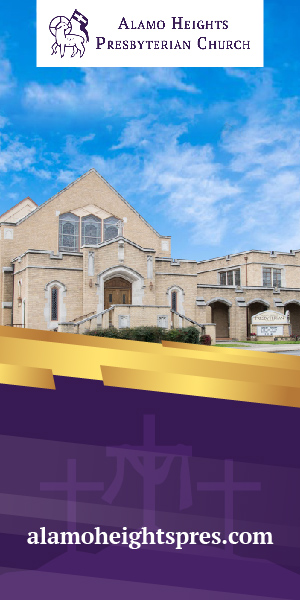Nestled a stone’s throw away from the vibrant heart of San Antonio is the charming city of Terrell Hills, Texas. With its serene, tree-lined streets and an eclectic mix of architectural styles, Terrell Hills offers a slice of suburban tranquility combining the allure of small-town living with the conveniences of a metropolitan proximity. It’s a place where history whispers from the stately homes, and community spirit shines through the well-maintained parks and friendly neighborhoods.
Established in the early 20th century, Terrell Hills has evolved from a rural area into a thriving community, with a rich history linked to the growth and development of the greater San Antonio area. Known for its high quality of life, the city reflects both the legacy of its past and the forward-thinking nature of its residents. With a population that values education and a strong local economy, Terrell Hills stands as a testament to the Texan spirit of community and prosperity.
In Terrell Hills, one can find an appreciation for both the finer things and the simpler pleasures of life. Whether it’s enjoying a quiet walk under the age-old oaks or partaking in the local events that dot the calendar, there’s a sense of togetherness that makes Terrell Hills more than just a place on the map; it’s a place many are proud to call home.
Historical Overview
Exploring the rich tapestry of Terrell Hills’ past reveals a history marked by significant milestones, from the city’s establishment by a prominent figure to its developmental growth and legal battles to preserve its autonomy.
The Origins of Terrell Hills
Named after Frederick Terrell, a local banker who once served as mayor of San Antonio, Terrell Hills began as an affluent suburb of San Antonio. The area’s development was a testament to the vision of its founders, who sought to create a community that offered both luxury and proximity to the bustling city of San Antonio.
Incorporation and Growth
This esteemed municipality was officially incorporated in 1939, signaling the start of a new phase in its history. Terrell Hills experienced substantial growth over the following decades, with the population more than doubling from 2,708 in 1950 to 5,572 by 1960, symbolizing the area’s increasing appeal and prosperity.
Annexation Events
Terrell Hills was subject to annexation attempts by the larger city of San Antonio. In a remarkable event, Terrell Hills fought off an annexation in 1957, which resulted in the city adopting a home-rule charter to secure its autonomy. This legal event showcased the community’s determination to control its own destiny and preserve the unique character of Terrell Hills, as noted in the Handbook of Texas Online.
Geography and Demographics
Nestled in Bexar County, Terrell Hills is a charming city with a rich composition of residents and geography. Here we’ll explore its exact location, the number of people who call it home, and the diverse backgrounds that make up this Texan community.
Location and Area
Terrell Hills is situated approximately 5 miles northeast of downtown San Antonio, Texas, marking it as part of the urban fabric of this vibrant area. It boasts an area of 1.61 square miles, providing its residents with a cozy yet spacious living environment. The city is defined by the coordinates of 29.47°N latitude and 98.45°W longitude, embedding it solidly within the geographic tapestry of the state.
Population Insights
As of the 2020 census, the city’s population was reported to be 5,852 individuals. Terrell Hills has experienced a significant increase in residents over the years, vividly depicting its rising appeal as a residential area. The calculated population density stands at an impressive 3,129.7 people per square mile, denoting a closely-knit community.
Demographic Composition
The demographic makeup of Terrell Hills is diverse, with the 2020 figures revealing a majority who identify as White, alongside other races contributing to the cultural mosaic of the city. The data reflects a significant Hispanic and Latino presence at 11.68% of the community. When considering the age and household dynamics, family structures vary, encompassing married-couple families, single individuals, and families with minor children. The breakdown of census households further informs us about the predominance of family households over other forms.
In summary, Terrell Hills is a close community that reflects a blend of cultures and backgrounds, with a demographic profile that underscores its small-town appeal in proximity to the large urban center of San Antonio.
Government and Civic Infrastructure
In Terrell Hills, Texas, the pillars of local governance, education, and public safety form the bedrock of the community’s structure. Each area works diligently to support the well-being of its residents.
City Governance
The City of Terrell Hills operates under a home-rule charter, which provides the framework for a council-manager form of government. The mayor and city council are elected by the community to oversee the city’s operations and services. They ensure that the city functions efficiently and in harmony with neighboring cities like Alamo Heights and the larger City of San Antonio.
Educational Institutions
As a part of the community’s commitment to education, Terrell Hills is served by multiple school districts. The prestigious Alamo Heights Independent School District boasts institutions like Howard Early Childhood Center and Woodridge Elementary School. Additionally, parts of the community are served by the North East Independent School District, which includes schools such as Wilshire Elementary School, Garner Middle School, and MacArthur High School. These schools represent the town’s focus on fostering a strong foundation for its young residents.
Law Enforcement and Safety
The Terrell Hills Police Department plays a crucial role in maintaining public safety and peace within the town. Dedicated to safety, they work tirelessly to ensure that Terrell Hills remains a secure and serene community for everyone. The department’s efforts underscore the town council’s commitment to creating a safe environment for all residents and visitors.
Local Economy and Housing
In the charming city of Terrell Hills, Texas, a blend of high individual earnings and a substantial real estate market reflect its thriving local economy and housing landscape.
Economic Profile
Terrell Hills shows an impressive economic profile, with a per capita income of $67,366, significantly higher than many other areas. This affluent suburb not only boasts high individual earnings but also records a median household income of a robust $131,250. The strong economic standing of Terrell Hills residents supports a vibrant local economy with a flourishing business environment.
Real Estate and Housing Market
The real estate and housing market in Terrell Hills is characterized by its diversity and quality. Residential properties here combine a range of architectural styles, contributing to the city’s picturesque streets. The median home price in Terrell Hills is approximately $475,000, a figure that reflects the area’s affluent nature and the quality of its housing units. Given the community’s preference for spacious living, the average household size and average family size are maintained at comfortable levels, ensuring a residential addition that meets the needs and preferences of its residents.
Culture and Community Life
The suburban community of Terrell Hills, nestled within Central Bexar County, embodies a vibrant culture heavily influenced by its proximity to Uptown and Midtown San Antonio. Its recreational opportunities and distinguished residents add a unique character to this friendly Texas town.
Parks and Recreation
Terrell Hills provides residents and visitors with ample green spaces and recreational facilities that contribute to the area’s charm. The city emphasizes the importance of parks as hubs for community activities, encouraging a healthy and social lifestyle. The close relationship with nearby Alamo Heights and Olmos Park means residents of Terrell Hills enjoy a network of well-maintained parks and facilities where families gather for leisure and community events. Proximity to Fort Sam Houston also offers additional recreational opportunities and historical significance to the Terrell Hills community.
Connectivity and Transportation
Terrell Hills, Texas, offers residents and visitors direct and convenient connectivity to the surrounding areas, especially to the heart of San Antonio. With major roadways intersecting the city, commuting is a seamless experience for those traveling to and from this suburban enclave.
Major Roadways and Access
Austin Highway, a vital transportation artery, runs through Terrell Hills and serves as a gateway to the northeast of Downtown San Antonio. This road is not just a direct route for drivers; it’s steeped in history as the Old Austin Highway, echoing the days when it was part of the primary road connecting San Antonio and the state capital, Austin.
Travelers can rely on the Austin Highway for smooth access to other significant destinations within San Antonio, and its proximity to Terrell Hills makes it highly beneficial for locals. Whether they’re commuting to downtown for work, leisure, or heading to another part of the Texas region, Austin Highway is a trusted path that supports the flow of daily transportation needs.
Diverse Heritage and Ethnicity
Terrell Hills, Texas, is an area with noteworthy ethnic and cultural diversity considering its size. This diversity reflects a variety of ethnic groups and cultural backgrounds that contribute to the city’s unique makeup.
Ethnic and Cultural Diversity
Terrell Hills is part of a group of three cities including Alamo Heights and Olmos Park, and it boasts an array of ethnic compositions. The majority of residents identify as White, comprising the largest portion of the population.
Hispanic or Latino individuals, who may identify with any race, form a significant part of the community, indicating a blend of cultural influences, including those with Spanish origins. The presence of African American, Native American, Asian, and Pacific Islander communities, although smaller in number, adds to the multifaceted character of Terrell Hills.
Here are some key statistics:
- White: 95.40% of the population
- Hispanic, Latino, or Spanish origin: 11.68%
- African American: 0.52%
- Native American: 0.16%
- Asian: 0.22%
- Pacific Islander: 0.02%
- Some other race or two or more races: 2.39%
(Data adapted from diversity information about Terrell Hills as outlined in a Wikipedia article about the city.)
The diversity of Terrell Hills enriches the cultural fabric of the city and provides a broad spectrum of heritage and ethnicity for a community of its size.






